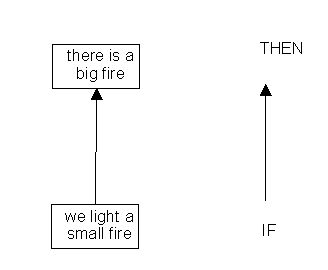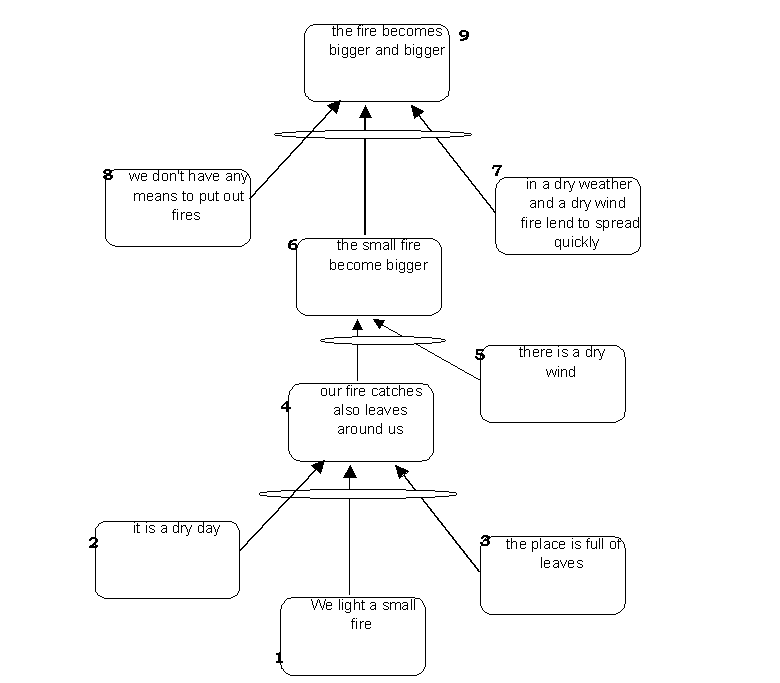This is a Cause and Effect (sufficiency) Tree that starts at the bottom with a new idea and develops the logic that states why a negative outcome is unavoidable. This is an invaluable tool in the process of decision making within a team.
Example:
We are in the wilderness and we want to have a cup of tea. Are there Negative Branches (NBRs) attached to this?
We can imagine several, such as: NBR from the fire; NBR with the water we use; the temperature of the tea we drink or what happens if we walk away and do not put the fire out. All of these NBRs have nothing to do with the tea, but they can cause undesirable effects on the environment we change.
What can go wrong when we have a fire?
If we are in the woods with a lot of dry leaves and we just start a small fire, without proper care and attention this small fire can become a big fire. The person who raises this reservation, the “Yes, but…,” has the knowledge we need in order to construct the NBR, as he has the experience of what can go wrong. We can probe by asking, “How come?”

IF we light a small fire, THEN there is a big fire BECAUSE: ….?
“Because,” leads to the answer, “there are dry leaves and a dry wind and therefore the small fire will spread to the leaves and the wind will carry it away rapidly and before you say Jack Robinson you have a big fire you cannot put out as you are not ready for it.”
Wow. What a stream of data. But when you actually sort it out, you can see the full logic. This reservation can be captured and presented in a logical way – the NBR.

So, what do we do with the NBR?
If the logic is explicit enough we can see many ways of ‘trimming’ or removing the negatives, especially by attacking the assumptions entering into the tree from the side. We can examine them and check if we need to take actions to negate their existence or their negative impact.
For example: Box No. 3 presents an assumption about the reality. The person assumes that there will be many dry leaves around. If they are right, we can agree to clear the area of the fire within a radius of two meters and not to light the fire underneath small trees.
Box No. 5: There may be a dry wind. If this is the case we will look for a protected area that is sheltered from the wind.
Box No.8: We had not planned to take any means of putting out fires. We can decide to take a fire extinguisher with us, or to check the place for the means available.
Boxes 3, 5 and 8 provide us with the ability to enhance the solution and be more prepared.
Boxes 2 and 7 are facts of life that we can hardly change, but we can adapt our behavior accordingly. If it is too dry and windy, we may decide not to take the risk at all, and drink water, or bring a Thermos with hot tea.




